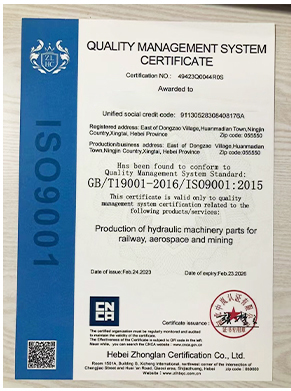- Arabic
- French
- Russian
- Spanish
- Portuguese
- Turkish
- Armenian
- English
- Albanian
- Amharic
- Azerbaijani
- Basque
- Belarusian
- Bengali
- Bosnian
- Bulgarian
- Catalan
- Cebuano
- Corsican
- Croatian
- Czech
- Danish
- Dutch
- Afrikaans
- Esperanto
- Estonian
- Finnish
- Frisian
- Galician
- Georgian
- German
- Greek
- Gujarati
- Haitian Creole
- hausa
- hawaiian
- Hebrew
- Hindi
- Miao
- Hungarian
- Icelandic
- igbo
- Indonesian
- irish
- Italian
- Japanese
- Javanese
- Kannada
- kazakh
- Khmer
- Rwandese
- Korean
- Kurdish
- Kyrgyz
- Lao
- Latin
- Latvian
- Lithuanian
- Luxembourgish
- Macedonian
- Malgashi
- Malay
- Malayalam
- Maltese
- Maori
- Marathi
- Mongolian
- Myanmar
- Nepali
- Norwegian
- Norwegian
- Occitan
- Pashto
- Persian
- Polish
- Punjabi
- Romanian
- Samoan
- Scottish Gaelic
- Serbian
- Sesotho
- Shona
- Sindhi
- Sinhala
- Slovak
- Slovenian
- Somali
- Sundanese
- Swahili
- Swedish
- Tagalog
- Tajik
- Tamil
- Tatar
- Telugu
- Thai
- Turkmen
- Ukrainian
- Urdu
- Uighur
- Uzbek
- Vietnamese
- Welsh
- Bantu
- Yiddish
- Yoruba
- Zulu
Oct . 03, 2024 10:10 Back to list
Understanding the Function and Importance of V-Belt Sheaves in Mechanical Systems
Understanding V-Belt Sheaves Essential Components in Power Transmission
In the world of mechanical engineering and power transmission, few components are as vital as the V-belt sheave. Commonly used in a variety of applications, including automotive, industrial, and agricultural machinery, V-belt sheaves play a crucial role in transferring power from one rotating shaft to another. This article delves into the significance, design, functionality, and application of V-belt sheaves.
What is a V-Belt Sheave?
A V-belt sheave, also known as a pulley, is a wheel or grooved disc that is designed to work with a V-belt. The 'V' shape of the belt allows it to fit snugly into the groove of the sheave, maintaining traction and facilitating efficient power transfer. V-belt sheaves come in various sizes and configurations, deemed suitable for different power transmission requirements, making them versatile components in mechanical systems.
How Do V-Belt Sheaves Work?
The operation of V-belt sheaves is relatively simple yet profoundly effective. When a sheave is connected to a rotating shaft and a V-belt is looped around it, the rotation of the shaft causes the sheave to turn. The V-belt, firmly seated in the groove of the sheave, transmits the rotational motion to another sheave connected to a different shaft, thus transferring power. This design minimizes slippage, ensuring that a significant amount of power is transmitted efficiently.
The geometry of the V-belt and sheave system also allows for flexibility in speed and torque ratios. By changing the size of the sheaves (taking into account diameters and groove designs), engineers can adjust the speed and torque delivered to the driven component, whether it's a fan, pump, or conveyor system.
Design Considerations
Effective design is paramount in the production of V-belt sheaves. Factors such as material selection, groove design, and sheave alignment are critical to the performance and longevity of the power transmission system.
v-belt sheave

1. Material Selection V-belt sheaves are typically made from materials such as cast iron, aluminum, or a combination of metals. The choice of material influences the sheave's strength, weight, and resistance to wear and corrosion.
2. Groove Design The shape and dimension of the grooves on a sheave are tailored to accommodate specific types of V-belts. V-belts come in various designs, such as classical V-belts, narrow V-belts, and synchronous belts. Each type requires specific groove profiles in the sheave to maintain efficiency and minimize wear.
3. Alignment Proper alignment between the sheaves and the shafts they drive is essential for minimizing friction and maximizing efficiency. Misalignment can lead to increased wear on the belt and sheave, decreased performance, and premature failure of the system.
Applications of V-Belt Sheaves
V-belt sheaves are ubiquitous in many sectors. In the automotive industry, they are employed in power steering, air conditioning compressors, and alternators, effectively transferring engine power to various accessories. In industrial settings, they are instrumental in driving conveyors, fans, and pumps, facilitating smooth operations across manufacturing processes.
Agriculture also relies heavily on V-belt sheaves, particularly in tractors and harvesting equipment, where efficient power transmission is crucial for productivity.
Conclusion
V-belt sheaves, while often overlooked, are fundamental components in the mechanics of power transmission. Their ability to efficiently transfer power, coupled with their adaptability to various applications, makes them indispensable in numerous industries. Understanding their design principles and functionality equips engineers and technicians to optimize their use, ensuring reliability and performance in mechanical systems. As technology advances, the innovation in sheave and belt design continues to evolve, promising even greater efficiencies for the future of power transmission.
-
Upgrade Power Steering Pump Belt for Smooth, Quiet Operation
NewsAug.27,2025
-
Precision Timing Belt & Chain: Engine Performance & Durability
NewsAug.26,2025
-
Precision Lathe Drive Belts: Durable & Reliable Performance
NewsAug.25,2025
-
84.5 Serpentine Belt: Durable & Precision Fit for Your Engine
NewsAug.24,2025
-
Premium Ribbed Drive Belts for Quiet Power Transmission
NewsAug.23,2025
-
High-Performance Vehicle Timing Belt for Engine Precision
NewsAug.22,2025

